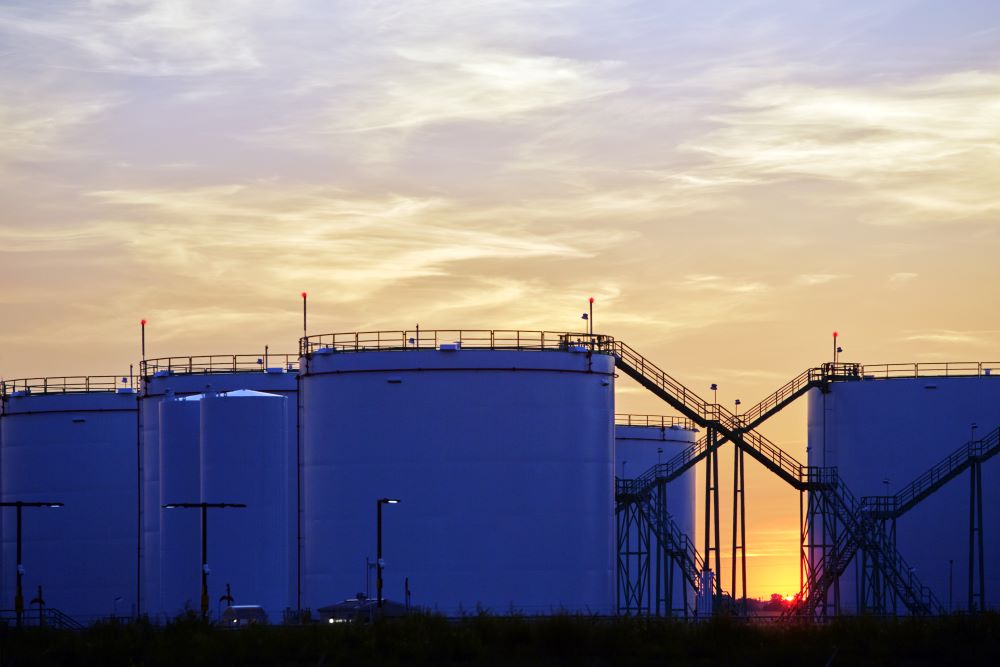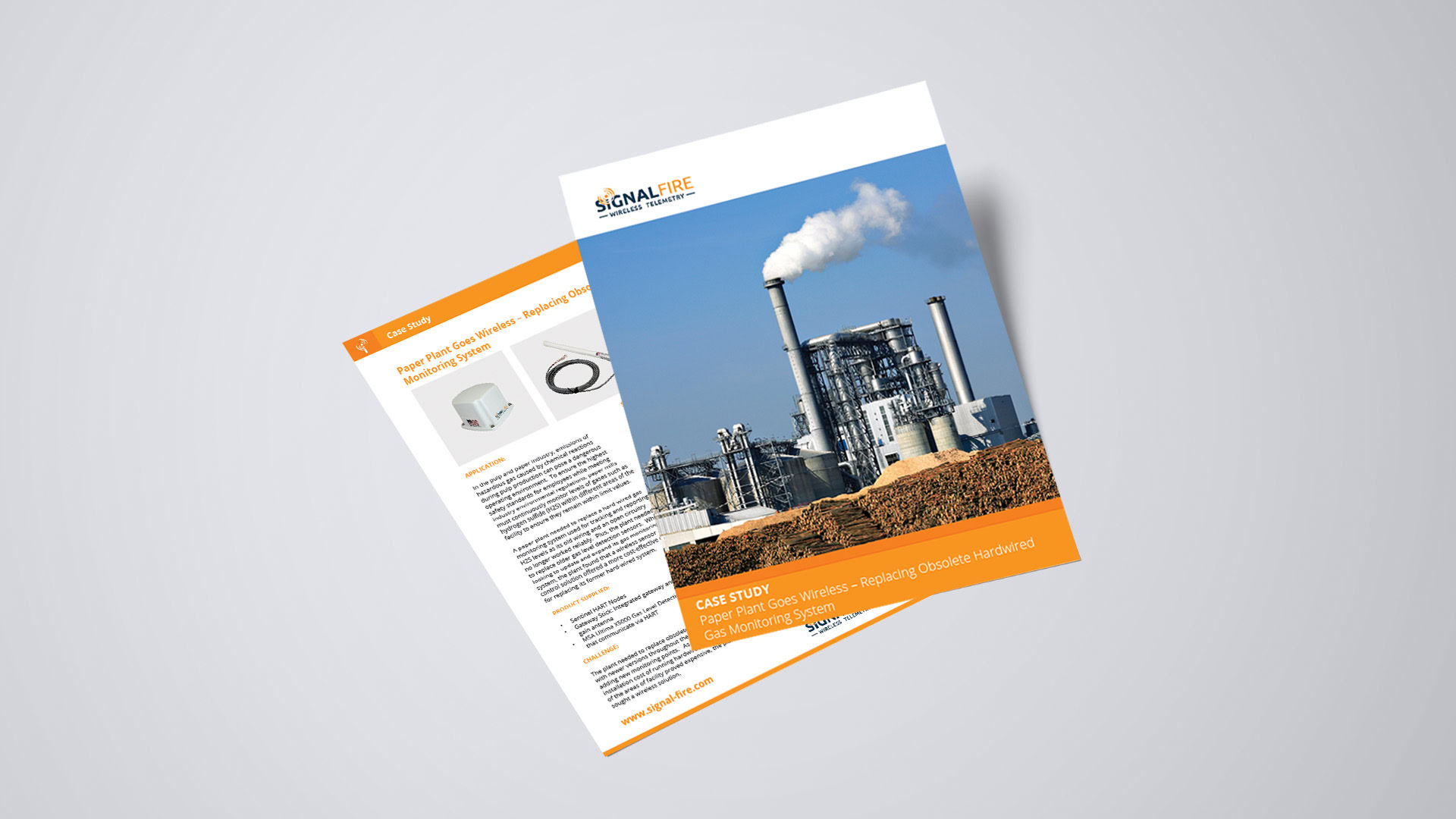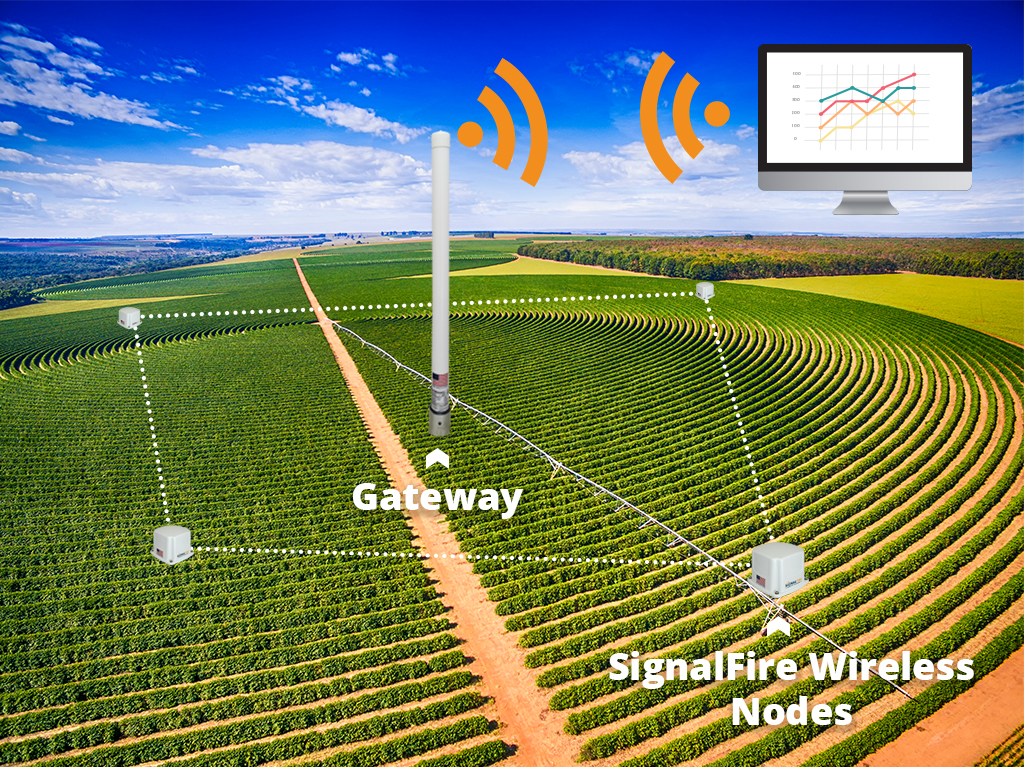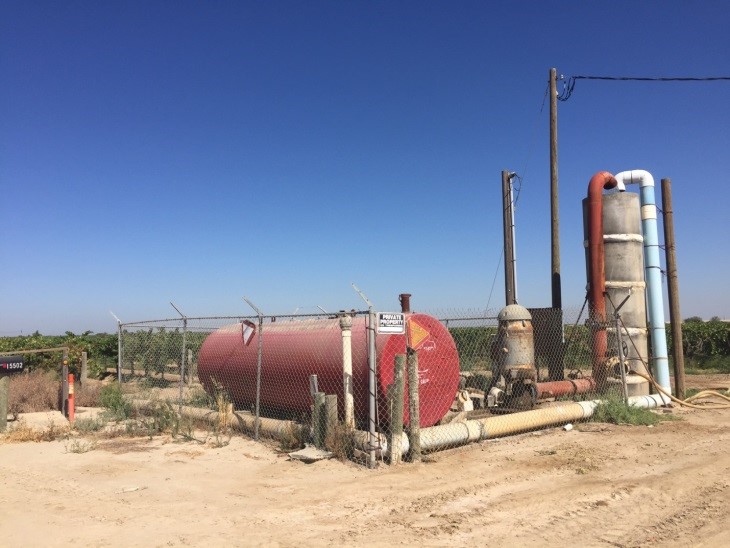
Get in Touch With Us and Tell Us About Your Toughest Monitoring and Control Challenges.
SignalFire Telemetry products connect you with crucial product and hardware data at any of your oil and gas operation sites—whether it’s a pump, pipeline, or storage tank.

SignalFire Telemetry devices install anywhere water asset monitoring is needed, whether it’s for collection purposes, treatment, or delivery.

SignalFire Telemetry devices can monitor key assets and can do it affordably, without any renovation or high-priced engineering costs. They install easily with no required cable or additional power. The data is available on your phone or computer and the cloud service can even output to your corporate system to integrate with the rest of your data and keep your operation running.

SignalFire Telemetry devices can monitor and manage water supplies and additives throughout the property, helping you avoid catastrophic shortages and keep your irrigation plan on track.

Avoid costly product loss in bulk storage tanks, terminals, and transportation movements. Whether calling for tank levels, gauge pressure, or even movement pumps or pipelines, SignalFire products can fill any monitoring gap throughout a facility.

Environmental fines for businesses are be frustrating and can bring business to a standstill until they’re worked out. No business wants to hurt the environment, and in competitive markets stopping production affects the bottom line and staff. But there are effective and affordable solutions with SignalFire Telemetry devices.

Expand visibility and control of your refinery or petrochemical processing facility without expensive renovations or redesigns. And do it with your current gauges and hardware. SignalFire telemetry devices are designed to work in harsh chemical environments and meet the strictest safety and security standards

No matter the size of your service map, monitoring remote assets ensures efficiency and keeps your operation in compliance. That’s how SignalFire devices can really help, offering the most affordable and effective monitoring solution that will monitor liquid, gas, electricity, and other assets.

Explore the diverse applications of SignalFire Wireless Telemetry Systems across different industries.

Access our latest brochures to explore comprehensive information about our products and services.

Easily find the sensors that are compatible with our systems on this dedicated page.

Explore a comprehensive collection of images showcasing our products, installations, and real-world applications.


By Sandro Esposito | Wireless Product Marketing Leader
A critical component of farm operations, irrigation systems ensure regular water distribution to crops using a system of pumps, piping and sprayers. As water becomes a more scarce resource and affects operational costs, farmers must find ways to more precisely manage agricultural irrigation systems to help conserve water supplies while also operating more profitability.
On many farms, monitoring the irrigation system remains a manual chore. Workers travel throughout the many acres of the farm to manually check meters, then record and aggregate measurements to determine the status of operations. In some cases, farms do not have meters and rely on sight to decide if operations seem to be working correctly. As a result, farm operators cannot readily identify potential issues with pressures in spray nozzles that disperse chemicals over crops or an abnormally high electric current draw from pumps. Bottom line, they don’t even know how much water or chemicals are being used to feed crops. As agriculture is a large consumer of the earth’s freshwater supply, farmers must employ better management practices to efficiently operate their irrigation systems.
A SignalFire Remote Sensing System (SFRSS) gives farmers and water districts the ability to remotely monitor and control different factors of the irrigation system from the convenience of a tablet, computer or even a mobile phone. Instead of traveling to multiple locations to manually collect data for analysis, the SFRSS can provide real-time status on water pressure, pump usage, pump water flow, water tank levels and other critical operating parameters. Using this data, farmers can analyze trends, determine smart irrigation based on weather conditions and calculate/analyze water usage and costs. An irrigation dashboard also supports more accurate planning of maintenance based on equipment condition.
The SFRSS Configuration

Figure 1. A typical irrigation setup for a given crop
The SFRSS employs radio nodes to extract and transmit data from sensors to a gateway that serves as the central processing hub. (See photo above). Fueled by built-in batteries or solar power, the nodes power the sensors for a truly wireless system. The gateway delivers the intelligent information to an off-the-shelf supervisory system using Modbus protocol over Ethernet.
Sensor agnostic, the SignalFire wireless telemetry system allows farm operators to specify different sensor types to monitor an agricultural irrigation system. Farms can use pressure sensors to track pump and spray nozzle pressure, electric clamp-on current meters to measure the pump current draw, flow meters to measure water and chemical usage and level sensors to monitor the levels of water storage tanks (see Figure 1) in one network.
Because the SignalFire solution can work as a mesh, nodes can hop over miles of distance, from one crop field to another, back to a gateway located at the point of monitoring such as the headquarters of the irrigation district. An Ethernet interface module connects the gateway to a local area network (LAN), a WI-FI network, or a cellular modem, bringing the information to the field operators.
In a farming environment, a wireless system must be able to spread over many square miles. The mesh network of the SFRSS permits many wireless devices to self-configure into a web-like structure over large areas regardless of hills, buildings and other structures. Robust gateways can accommodate hundreds of transceiver inputs from the multiple field sensors, enabling the network to cover a geographic range of a mega farm of 10,000 acres that roughly equals 15 square miles.
Using the SFRSS to monitor and control farm irrigation system operations, farmers can cost effectively:
By implementing the SFRSS, farmers gain better control and visibility over the operations of their irrigation systems to save money while using water more responsibly. To find out more about how the SFRSS is being used in other agricultural applications, visit our website or contact us at info@signalfire.com.
Get in Touch With Us and Tell Us About Your Toughest Monitoring and Control Challenges.





"*" indicates required fields
This website uses cookies so that we can provide you with the best user experience possible. Cookie information is stored in your browser and performs functions such as recognising you when you return to our website and helping our team to understand which sections of the website you find most interesting and useful.
Strictly Necessary Cookie should be enabled at all times so that we can save your preferences for cookie settings.
If you disable this cookie, we will not be able to save your preferences. This means that every time you visit this website you will need to enable or disable cookies again.